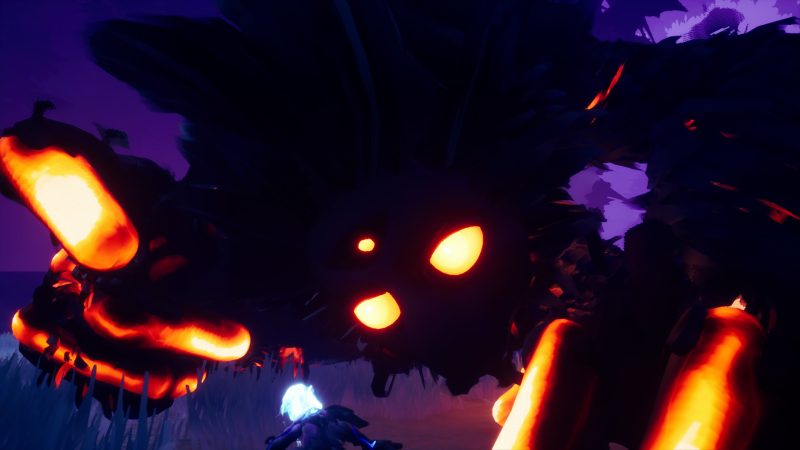Strayed Lights PS5 Review. Strayed Lights is the debut title from developer Embers. As far as debuts go, it’s a pretty solid one. However, several misfires will keep many players from seeing the special premise the game delivers.
Strayed Lights PS5 Review – Not All Good Ideas Mix Together Well
Strayed Lights does not include any dialogue, which leaves any storytelling reliant on character animations and interactions. Thankfully, the game is equipped to do this, and boy does it do this well. The art style mimics a Saturday morning cartoon, which lends itself to emphatic expression without much detail. The camera work also enhances the experience through the use of thoughtful angles and shots to help convey exactly what the characters want you to see and feel.
There’s a great deal of allegory in this game, and it comes through in how you interact with your other family members. Initially, you wrestle with your own demons. Then you take what you learned and help others through their struggles. There’s also strength found in finding yourself as well as helping others. You then grow as you do this, both in stature and skills. Not all issues are immediately clear, but the events that play out add organic clarity. Plus, the Trophies that pop also give little tidbits to reflect on what just happened.
Enemy design absolutely rocks, especially bosses. As you move along, they grow more and more elaborate, reflecting how much more complicated problems become as you grow up. There’s a lot of thoughtfulness behind this game, and it shows in the design work.
Combat asks you to be more defensive and responsive instead of offensive. You can attack, but attacks don’t yield efficient progress. Instead, you parry attacks. In doing so, you take energy from your opponent. They then take your energy when they attack you. Since you fight against your family, this style of combat complements the premise. You don’t want to hurt them, but you need to stop them somehow.
Fighting To Enlightenment
To help your efforts, you get a small skill tree that gives you skills to help sway combat your way. These see you stun, close the gap to your enemy, and universal blocking. Again, these help, but you need to come to terms with parrying in order to succeed. To make it more complicated, you need to match the light and dark elements of your enemies when they attack you. Switch to orange to parry orange attacks and vice versa for blue attacks. While you can parry either with either color, you won’t dissipate your enemy’s energy without properly matching their color.
Unfortunately, what makes combat more cumbersome than tricky are the windows available for you to successfully parry. Not all attacks share the same size window, which makes muscle memory hard to form. Instead, you end up learning the timing for each individual attack, turning this game into more of a memorization type than one that only demands timing.
This shows itself more profoundly in boss fights. These end up being more choreographed than anything. After a couple deaths, you memorize the attack sequences and then beat the boss.
Cheap deaths often came from this, diminishing the experience often. When the game lets you play and progress naturally, the overall premise is allowed to breathe and develop. In these stretches, the game feels great. However, when combat gets in the way, particularly boss fights, that same premise loses its luster out of frustration.
The Drawing Board
Compounding on that is just how big the maps are. While they thankfully are linear, the paths see you running for minutes and minutes with nothing to see or interact with apart from the occasional backdrop. In the nice moments, this works well. However, after bouts of combat frustration, these stretches feel more like wastes of time.
All in all, Strayed Lights would have benefitted from more editing. As it stands, the game only lasts about four hours, but honestly half of that time was either beating against a wall of irregular parry windows or navigating uneventful spaces.
Now, this isn’t to say that the combat here is bad by any means. It works well enough as it is. It just feels like it’s a decent idea that’s taped to a good idea. Plenty of games in history are beloved for their stories and premise over their gameplay, like Majora’s Mask. This follows that pattern.
Some Good Ideas Meant For Different Games
I want to iterate again: Strayed Lights is still a good experience. The search for self-discovery by helping others comes through, even without dialogue or voiceover. At the same time, that cool concept isn’t given the room to breathe that it needs. Instead, its combat, which would be okay in a different setting, fragmented the overall story development, keeping it from being one cohesive experience. It’s definitely worth a shot, because it makes for a special indie experience. It just lacks the polish to push it to the top.
Review code kindly provided by publisher




